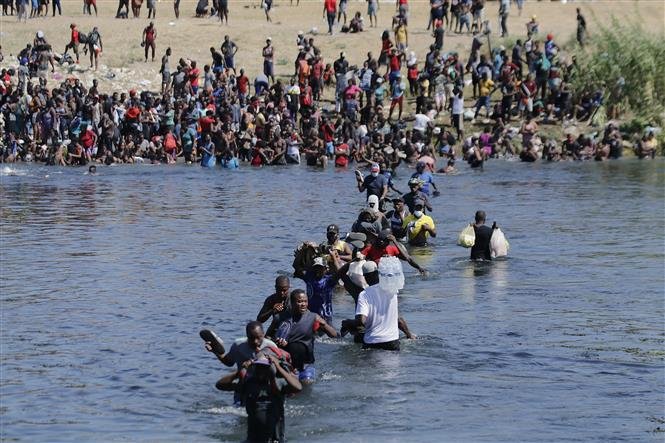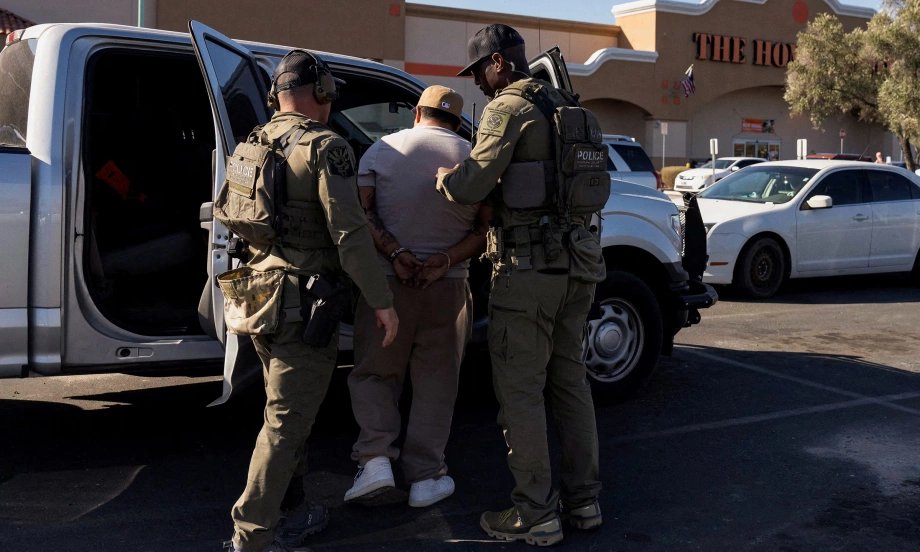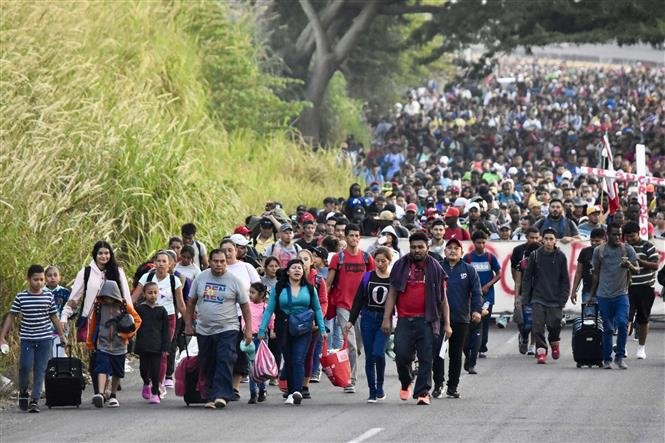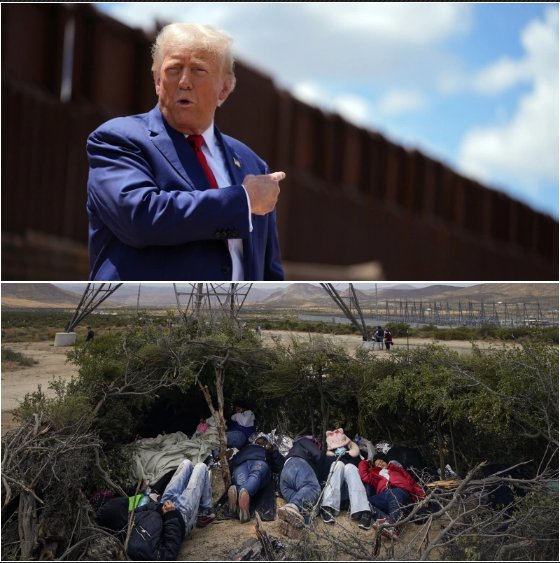When Donald Trump took office in 2017, one of his key campaign promises was to take a hard stance on immigration, particularly illegal immigration. As part of this pledge, Trump’s administration launched several aggressive immigration policies aimed at reducing the number of undocumented immigrants in the United States. From increasing border security to enacting stricter immigration enforcement measures, Trump’s immigration crackdown was one of the most prominent aspects of his presidency.
Now, years later, questions abound: Has Trump’s immigration crackdown really paid off? Did these tough policies achieve their intended goals, or were they merely politically motivated gestures that caused harm without delivering the promised results?
In this article, we’ll take an in-depth look at the impact of Trump’s immigration crackdown, analyze the effects of his policies on the U.S. immigration system, and discuss the broader implications for both legal and illegal immigration.
## **Trump’s Immigration Policies: A Snapshot**

During his presidency, Donald Trump implemented a series of controversial immigration policies aimed at curbing illegal immigration and enforcing stricter border control measures. Some of the key components of his immigration agenda included:
### **1. Building the Border Wall**
One of the most iconic aspects of Trump’s immigration policies was his proposal to build a wall along the U.S.-Mexico border. Trump argued that a physical barrier would prevent illegal immigration and drug trafficking from entering the U.S. His administration allocated billions of dollars to begin construction, and while a significant portion of the wall was completed, the project faced numerous obstacles, including legal challenges, environmental concerns, and funding issues.
Despite these challenges, the construction of the border wall became a major symbol of Trump’s commitment to immigration enforcement, and it was frequently used as a talking point during his reelection campaign.
### **2. The “Zero Tolerance” Policy**
In 2018, the Trump administration introduced the “Zero Tolerance” policy, which aimed to prosecute all individuals who crossed the border illegally, including those seeking asylum. This policy led to widespread family separations, as children were taken away from their parents during the immigration process. The policy was met with strong public backlash and legal challenges, and it was eventually reversed, but not before significant damage had been done to the reputation of the U.S. immigration system.
The family separation policy drew international criticism, with many arguing that it violated human rights and caused lasting trauma for the children involved. Despite the public outcry, Trump defended the policy, arguing that it was necessary to deter illegal immigration.
### **3. Travel Bans and “Muslim Ban”**
Another key element of Trump’s immigration crackdown was the series of travel bans, often referred to as the “Muslim Ban,” which targeted individuals from several predominantly Muslim countries. These bans were challenged in court, but Trump’s administration ultimately succeeded in implementing a more limited version of the travel restrictions.
While the travel bans were portrayed by Trump as a necessary step to protect national security, critics argued that they were discriminatory and targeted specific religious and ethnic groups. The policy was deeply polarizing, contributing to the already heated debate on immigration in the U.S.
### **4. DACA and the Dreamers**
Trump also attempted to dismantle the Deferred Action for Childhood Arrivals (DACA) program, which allowed undocumented individuals who were brought to the U.S. as children (known as Dreamers) to remain in the country and avoid deportation. The termination of DACA was one of Trump’s most contentious immigration policies, and it sparked widespread protests from both Dreamers and their allies.
In 2020, the U.S. Supreme Court ruled that Trump’s administration had failed to properly terminate the program, temporarily protecting Dreamers from deportation. However, the future of DACA remains uncertain, with ongoing legal battles over its fate.
## **The Impact of Trump’s Immigration Crackdown**

The question of whether Trump’s immigration policies have paid off is multifaceted. On one hand, some supporters of his immigration agenda argue that his tough stance led to a reduction in illegal immigration and sent a strong message about the U.S. commitment to border security. On the other hand, critics contend that many of Trump’s policies caused harm to vulnerable populations, strained the U.S. immigration system, and failed to address the root causes of immigration challenges.
Let’s break down the impact of Trump’s immigration crackdown from several perspectives:
### **1. Border Security and Illegal Immigration**
One of Trump’s primary objectives was to reduce illegal immigration by strengthening border security. While the construction of the border wall was one of his signature initiatives, it is important to assess whether it had a meaningful impact on immigration patterns.
#### **Impact on Border Apprehensions**
During Trump’s presidency, the number of illegal border crossings did decrease in some years, particularly as a result of the administration’s strict enforcement measures. The number of apprehensions at the U.S.-Mexico border, which serve as an indicator of illegal crossings, dropped significantly during Trump’s first year in office. However, these numbers fluctuated over time, and the reduction was not solely due to the border wall construction.
The Trump administration also made use of technologies such as drones, sensors, and surveillance systems to monitor the border, alongside an increase in the number of Border Patrol agents. These measures, combined with the zero-tolerance policy, led to an initial decline in illegal crossings, but the numbers began to rise again as the economic and social conditions in Central America worsened.
#### **The Wall’s Effectiveness**
The effectiveness of the border wall in preventing illegal immigration is still a topic of debate. While some argue that it has contributed to slowing down immigration in certain areas, others point out that migrants can simply bypass the wall by entering through areas without fencing or using other methods of illegal entry, such as overstaying visas.
Additionally, the wall itself is not a comprehensive solution to the complex issues driving immigration. Factors such as violence, poverty, and instability in neighboring countries continue to push people to seek refuge in the U.S., regardless of the physical barriers in place.
### **2. Humanitarian Concerns and Family Separations**

One of the most damaging aspects of Trump’s immigration crackdown was the “Zero Tolerance” policy, which led to family separations at the U.S.-Mexico border. The policy faced intense backlash from human rights organizations, religious groups, and even some Republicans, who condemned the inhumane treatment of families seeking asylum.
Although the policy was eventually reversed, the trauma caused by family separations remains a dark chapter in the U.S. immigration system. Thousands of children were separated from their parents, and many have still not been reunited. The psychological and emotional toll on the affected families is immeasurable, and the policy has left a lasting scar on U.S. immigration policy.
### **3. Impact on Immigrant Communities and the Economy**
Trump’s immigration policies also had significant impacts on immigrant communities across the U.S. DACA recipients, who are often college-educated and employed, faced uncertainty about their futures, creating anxiety for those who had lived in the U.S. for most of their lives. The end of DACA and the threat of deportation left many individuals in limbo, unsure of their legal status and their ability to remain in the country.
Beyond DACA, other policies, such as the restriction of asylum seekers and the increased difficulty in obtaining work permits, created barriers for individuals who sought a better life in the U.S. While some argued that these policies would encourage legal immigration, critics pointed out that they harmed vulnerable populations, including children, families, and refugees.
On the economic front, immigrant labor is a crucial component of many sectors, including agriculture, construction, and hospitality. By restricting immigration, Trump’s policies may have led to labor shortages in some industries, negatively affecting businesses and the economy.
### **4. Legal Immigration and the Visa System**
Trump’s policies were also aimed at restricting legal immigration. Under his administration, there were efforts to reduce the number of visas issued for skilled workers, refugees, and family reunifications. The “America First” approach prioritized protecting American jobs and reducing competition for employment, but these measures often led to delays and backlogs in the visa system.
The tightening of legal immigration processes affected many people seeking to reunite with their families or pursue opportunities in the U.S. Critics argued that these policies created unnecessary barriers for individuals who wanted to contribute to the U.S. economy and society, potentially stifling innovation and growth in key sectors.
### **5. The Political and Social Divide**
Trump’s immigration crackdown also had a profound impact on the political and social climate in the U.S. Immigration became a highly polarizing issue, with strong divisions between those who supported stricter enforcement and those who advocated for more humane policies. Trump’s rhetoric on immigration—often framed in terms of “illegal aliens” and “criminals”—amplified xenophobia and anti-immigrant sentiment.
While Trump’s supporters viewed his immigration policies as necessary for national security and economic protection, critics saw them as discriminatory, harmful, and unjust. The debate over immigration became a central issue in the 2020 election, with the Biden administration taking a different approach focused on providing a pathway to citizenship for undocumented immigrants and protecting DACA recipients.
## **Conclusion: Has Trump’s Immigration Crackdown Really Paid Off?**

Trump’s immigration crackdown has had a significant impact on the U.S. immigration system, but whether it has truly “paid off” depends on how one defines success. In terms of reducing illegal immigration and strengthening border security, the crackdown had some positive outcomes, such as a temporary reduction in border apprehensions. However, the policies also led to significant humanitarian issues, including family separations and the uncertainty faced by DACA recipients.
While the border wall and other measures may have temporarily slowed illegal immigration, they have not addressed the root causes of migration from Central America and beyond. Moreover, the long-term economic and social consequences of restricting both legal and illegal immigration may have outweighed the benefits of these policies.
In the end, Trump’s immigration policies achieved some of his administration’s goals, but they also deepened divisions in the U.S. and caused considerable harm to vulnerable immigrant communities. The question remains: Was the crackdown worth it? Only time will tell how the legacy of Trump’s immigration policies will be viewed in the broader context of U.S. history.
